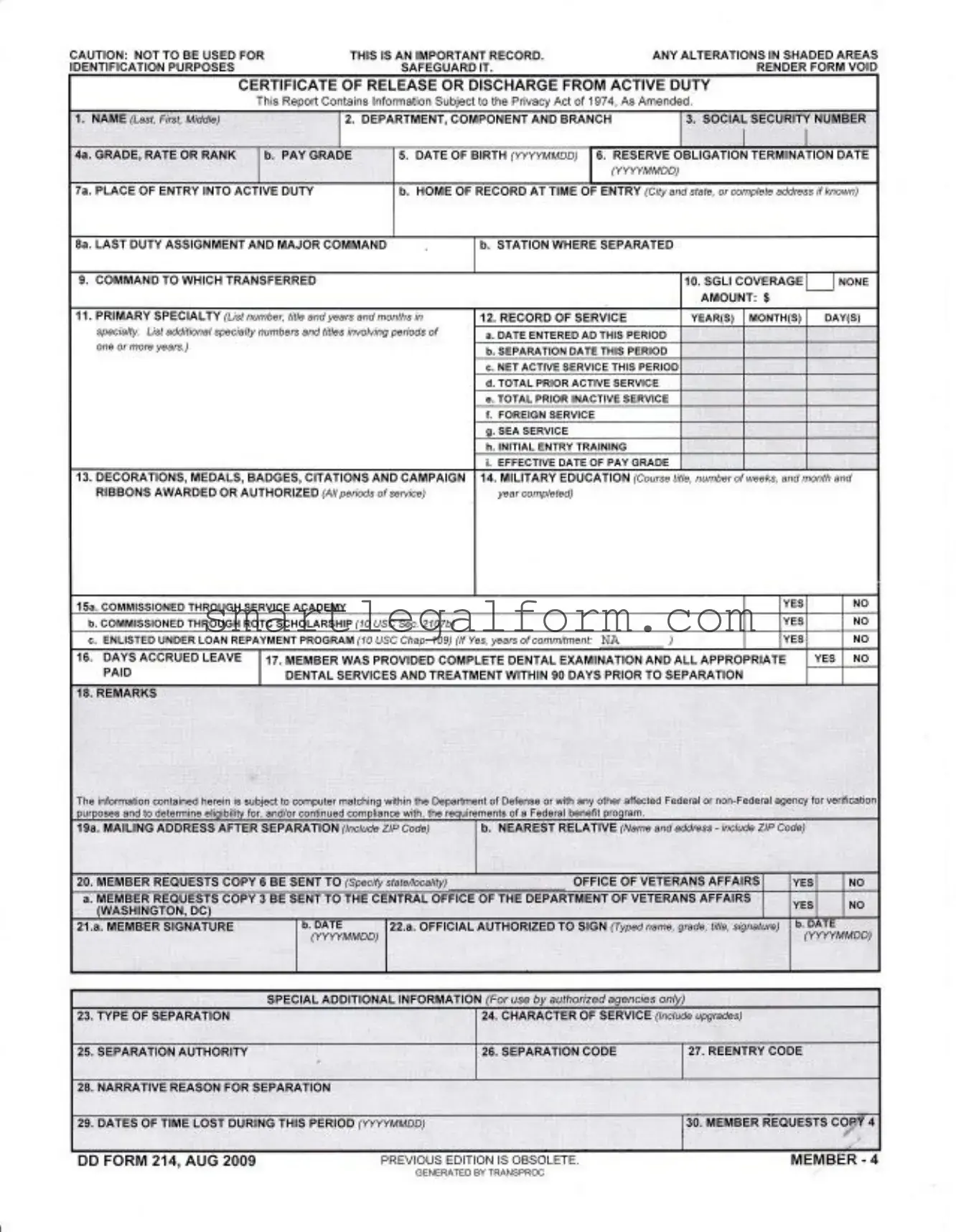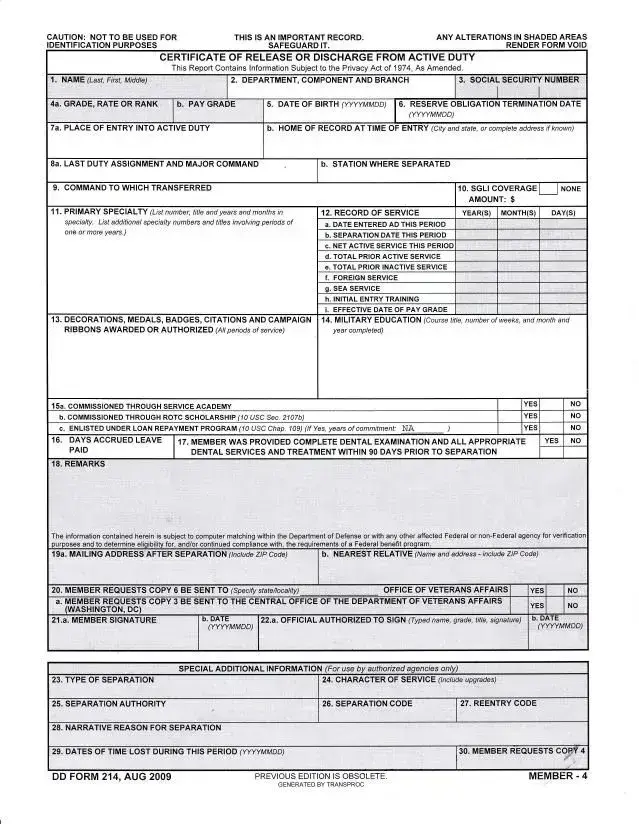Completing the DD Form 214 can be a crucial step for service members transitioning out of active duty. However, there are common mistakes that individuals often make while filling out this important document. Understanding these errors can help ensure that the form is completed accurately and efficiently.
One frequent mistake is providing incorrect personal information. For instance, errors in the name, social security number, or date of birth can lead to significant delays in processing and may affect eligibility for benefits. It is essential to double-check these details to avoid complications.
Another common error involves misunderstanding the shaded areas of the form. Alterations in these sections can render the form void. Service members should ensure they do not make any changes in these areas, as this could lead to the rejection of the application.
Inaccurate reporting of service dates is also a mistake that can have serious implications. Service members must provide the correct date entered active duty and separation date. Failing to do so can affect calculations of benefits and entitlements.
Additionally, many individuals overlook the importance of completing the remarks section. This area can provide valuable context or additional information that may be relevant to the individual’s service. Omitting this information can result in a lack of clarity regarding the service member's history.
Lastly, forgetting to sign and date the form is a common oversight. The signature is a critical component that verifies the information provided is accurate. Without a signature, the form may not be processed, leading to delays in receiving benefits or documentation.
By being aware of these common mistakes, service members can take the necessary steps to ensure their DD Form 214 is filled out correctly, facilitating a smoother transition to civilian life.

